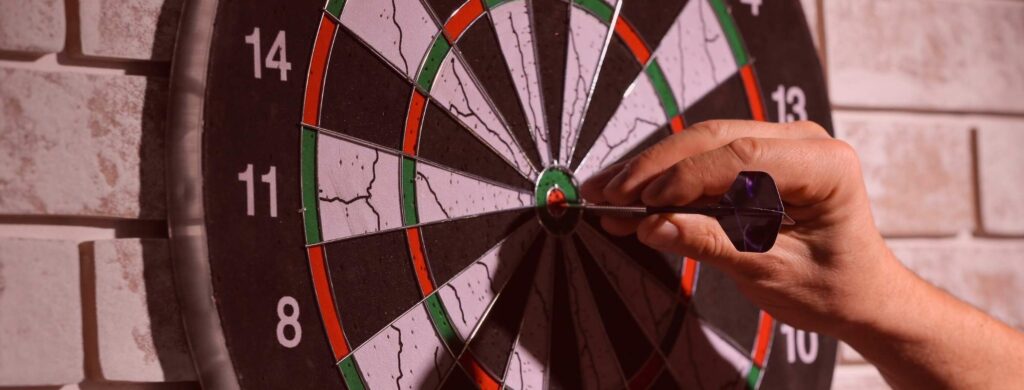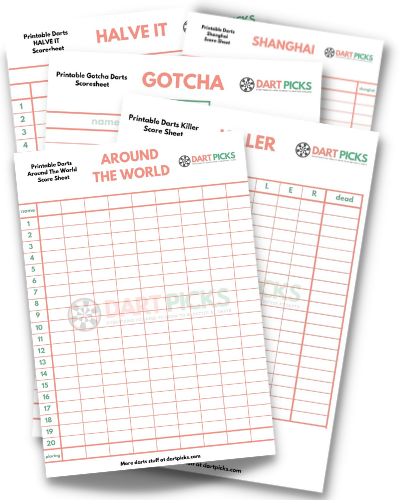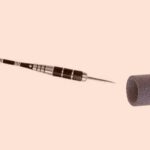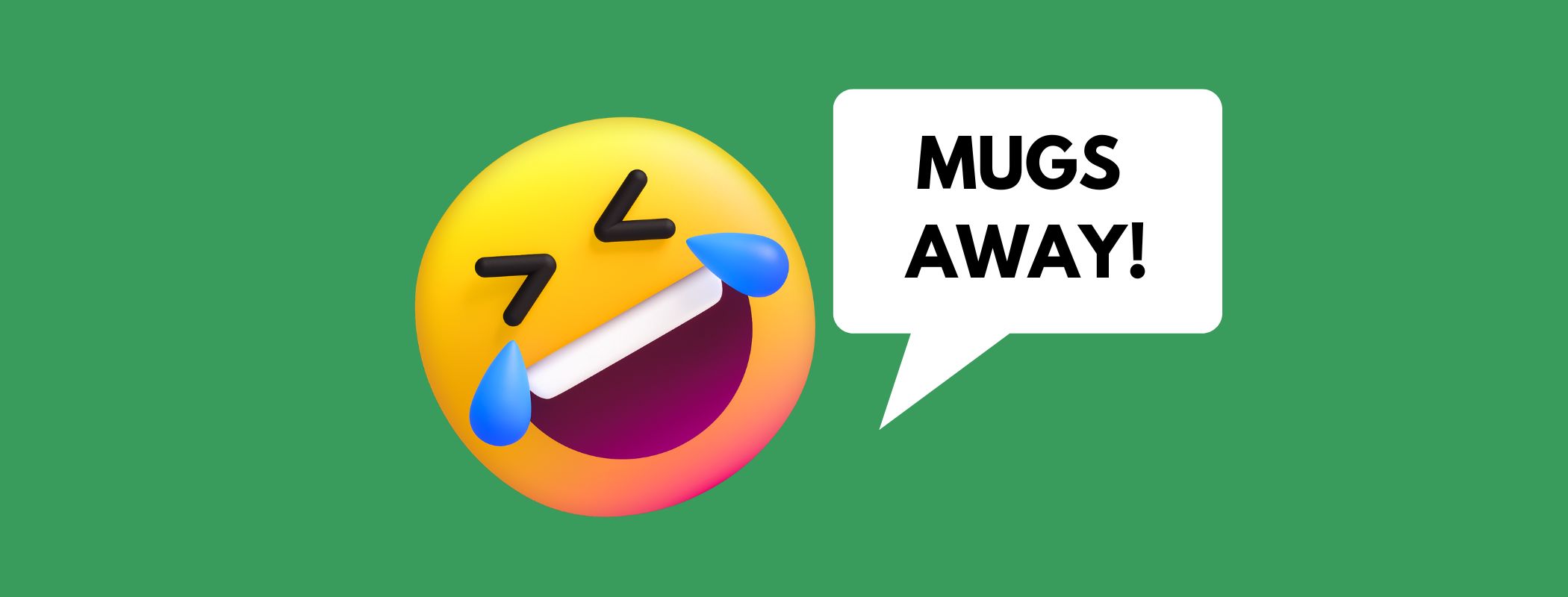Darts is a game that requires precision and accuracy. If you are not using the best form, or your arm is getting sore from throwing so many darts, it can be difficult to compete.
The advice in this article will focus on prevention, treatment, and how to check your technique for problems.
Table of Contents
Dart Throwers Elbow
Dart Throwers Elbow is probably why your arm hurts after playing darts.
The action of throwing a dart doesn’t look like much, but if you are on a mission to improve your game, repetition and practice have to become an almost daily routine. Injuries in darts are common, particularly with elbows, wrists, shoulders, and fingers. However, the elbow is probably the most common.
Just like tennis elbow, darts elbow is similar in that overexertion of the arm causes repetitive strain injury. In any sport that involves huge repetition with the hands or arms, the participants are susceptible to inflammation.
Repetition of movement and overuse is the cause of dart throwers’ elbow.
Darts Elbow Prevention

Build up Gradually
When you’ve decided that darts is something you want to devote some serious time to – it’s REALLY vital that you build up your practice time length gradually. Yes, you may be able to practice for a few hours at a time, right off the bat…but the price you pay for jumping in that quickly could be immense.
Whatever the new physical activity, remember that your body will take time to adapt. Your joints are used to a certain intensity level in your daily life and although compared to other activities, darts is a non-contact, and low activity level sport, it’s the repetition that is problematic. Repeating the movement over and over for long periods of time and your body may have trouble adapting.
Pace yourself and build up your practice time slowly. 15-20 minutes a day is a good place to start (this will vary of course depending on age and base fitness level). Stick to this for at least a couple of weeks, and then extend by 10-15 minutes.
Building up your practice time gradually as a beginner can reap huge rewards in avoidance of injury as you start to play at greater intensity.
Stretch
Stretch before you play. Ok, you may be thinking this will look ridiculous, it’s not as if I’m about to run a marathon! However, stretching and warming up the joints is a proven way in any physical activity to avoid injury.
Here are some stretches you can do before playing – remember to take your time and don’t over-extend, nothing should be sore when you stretch:
- Wrist flexes – Hold your throwing arm in front of you, palm up and with your other hand, grasp your fingers and gently extend the wrist back. Turn hand over and repeat in other direction. Repeat 5- 6 times.
- Biceps – Stand near a door frame. Extend your arm out straight from your body level with your shoulder. Grab the door frame and walk slowly forward until you feel the stretch in your biceps. Hold for 10 seconds. Repeat 3 times. This stretch also focuses on the pectorals (chest muscles).
- Triceps – |Reach your arm behind you, keeping your elbow as high as possible and gently press back and down on your elbow. hold for 10 seconds, 3 times each side (see pic).
- Deltoids – Kepping your arm as straight as possible, bring it across the front of your chest, using your other hand, supprt the elbow and gently pull it towards your body. Hold for 10 seconds, 3 times each side.
- Neck – stand up straight and looking straight ahead , slowly lower your ear to your shoulder. Hold for 5 seconds and 3x each side.

Remember to carry out stretches on both sides of the body. That way you avoid imbalance and promote the development of flexibility equally.
Review Your Throwing Technique
If you are experiencing pain during throwing time or after, it’s good to review your throwing technique and check to see if there’s an aspect of your throw that is causing the issues.
It can be tricky to evaluate your own darts throw so try filming yourself and watch it back or get someone else to observe you throw.
What to look out for:
- Unesary twisting
- Gripping the dart to tight
- Excessive flicking movements
- Elbow allignment
For more details on good darts throwing techniques check out this article.
Try Joint Supplements
We’ve come on leaps and bounds in vitamin supplements and there are now lots available specifically to help your joints. Some of the best supplements for joints include:
Pacing Your Practice Time
Pacing your level of intensity in practice and the amount of time you spend on the board becomes vital once you start to feel the pain of darts elbow. If you choose to ignore it, it can cause you problems and even get to the point where you can’t throw at all.
Sticking to a set practice time will help you make sure you don’t overdo it.
Throwers Elbow Treatment
R.I.C.E
For any repetitive strain injury, the advice is the same. You must rest your arm. Ice your elbow several times a day for 15 minutes to reduce swelling. A compression bandage will help keep swelling down and support the joint while it recovers. And try to keep your arm elevated – this can be tricky but if possible, keep it above heart level. This will improve swelling.
What to Do Until You Recover
Rest.
Unfortunately, rest is the only way to recover from repetitive strain injury in darts. However, all may not be lost completely as you could try throwing with your other arm.
You may be thinking that there’s no point throwing with your non-dominant hand as it will never get close to the skill level you have achieved with your dominant hand. However, there are many lessons to be learned from throwing with your other arm.
The thought process is completely different. You have to actually think about what you are doing with each and every part of your body during the throw. This can really help you understand throwing technique better and, when your arm is better, you can return with the added knowledge of throwing technique.
Read all about dartitis next.
How Long Does it Take to Recover from Darts Elbow
How long is a piece of string? It will depend on the severity of your injury and how good you are at resting it.
Once you have experienced a sore arm from darts, you’ll have to be careful from now on. This is the type of injury that can be aggravated easily by over-exerting yourself during practice.
In Summary
There are steps as a new darts player that you can take to lessen your risk of injury later, so take your time and build up slowly.
Once you’ve experienced a sore arm from darts it’s likely that your arm will be susceptible to it again. Revise practice schedules accordingly and examine your throwing technique.
You might like this FAQ article if you have more questions.
Sue has been playing darts since her 20’s when she played in weekly tournaments and she enjoys writing about darts. She’s also a great teacher, and she enjoys helping others learn how to play the game well. When Sue isn’t throwing darts, she enjoys spending time with her family and friends.
The easy way to keep track of your score is with our printable darts scoresheets. Easy to download and keep on your phone or computer or print straight off from our website. Pop your email address into the box and we'll send them straight to you.








